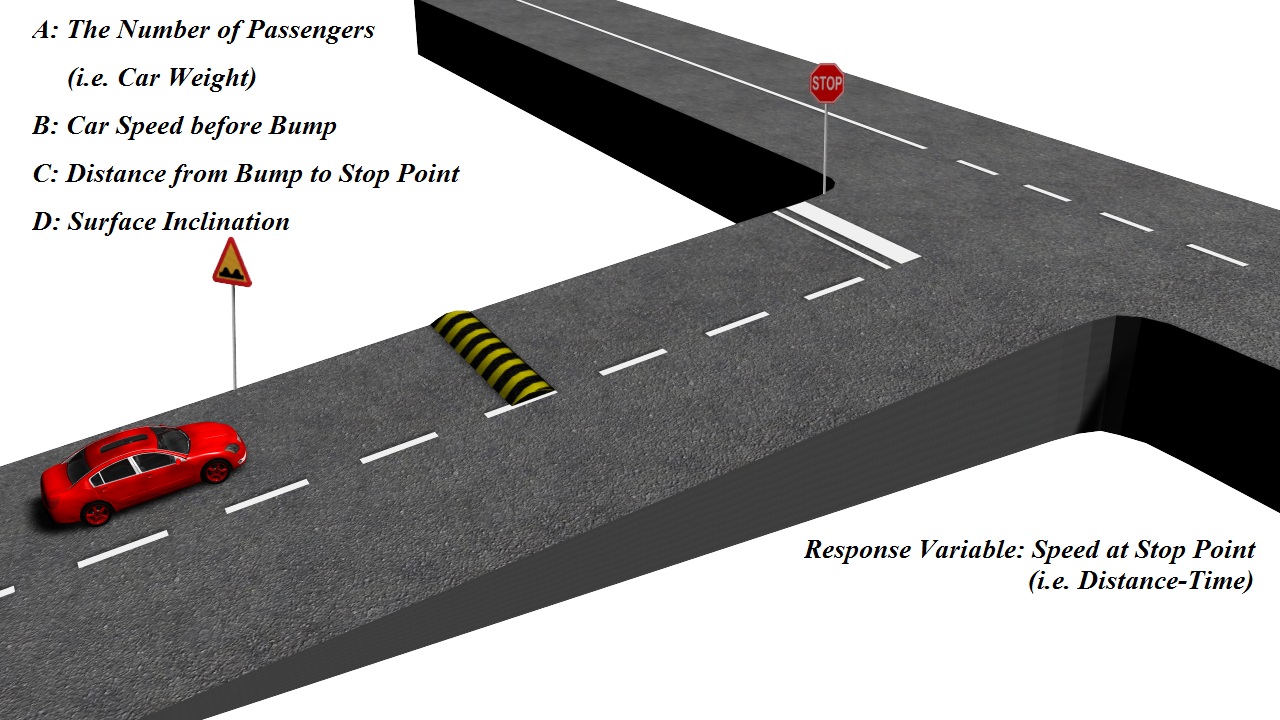The Best Location for Speed Bump Installation Using Experimental Design Methodology
Abstract
Speed bumps, as traffic calming devices, have been extensively used to reduce traffic speed on local streets. This study represents a unique application of experimental design methodology where the effects of some controllable factors in determining the best location for installing speed bumps before stop points (e.g. entry gates, road junctions) were investigated. Through Classical Design of Experiments (DOE), the optimum location of the speed bump was obtained based on the graphical plots of the significant effects. The speed at the stop point was treated as the response and minimum speed is desirable. Design-Expert® software was used to evaluate and analyze the results obtained. The suggested mathematical model effectively explains the performance indicators within the ranges of the factors. The car speed is the most significant factor that affects the distance-time in comparison with other factors, which provides secondary contributions.References
Ansari Ardeh, H., Shariatpanahi, M., Nikkhah Bahrami M.: Multiobjective Shape Optimization of Speed Humps, Struct Multidisc Optim, Vol. 37, No. 2, 2008, pp. 203-214.
Salau, T.A.O., Adeyefa, A.O., Oke, S.A.: Vehicle Speed Control Using Road Bumps, Transport, Vol. 19, No. 3, 2004, pp. 130-136.
Vrubel, Y., Kapskij, D., Mazalevskij, D., Samoylovich, T., Korzhova, T., Kuzmenko, V.: Some Questions of Speed Humps Application on the Roads, The 8th International Conference - Reliability and Statistics in Transportation and Communication, 15-18 October 2008.
Huang, J., Zhang, X., Li, Z.-b., Wan, J.-j., Liu, P.: Evaluating the Speed Reduction Effectiveness of Speed Bump on Local Streets, ICCTP 2011 : Towards Sustainable Transportation Systems, American Society of Civil Engineers, 2011, pp. 2348-2357.
Khorshid, E., Alfares, M.: A Numerical Study on the Optimal Geometric Design of Speed Control Humps, Engineering Optimization, Vol. 36, No. 1, 2004, pp. 77-100.
Parkhill, M., Sooklall, R., Bahar, G.: Updated Guidelines for the Design and Application of Speed Humps, ITE 2007 Annual Meeting and Exhibit, Pittsburgh PA, Institute of Transportation Engineers, 2007.
Pedersen, N.L.: Shape Optimization of a Vehicle Speed Control Bump, Mechanics of Structures and Machines, Vol. 26, No. 3, 1998, pp. 319-342.
Chadda, H., Cross, S.: Speed (Road) Bumps: Issues and Opinions, Journal of Transportation Engineering, Vol. 111, No. 4, 1985, pp. 410-418.
Pau, M.: Speed Bumps May Induce Improper Drivers’ Behavior: Case Study in Italy, Journal of Transportation Engineering, Vol. 128, No. 5, 2002, pp. 472-478.
Wang, C., Shi, Y., Chen, Y.-s.: The Research of The Effect of The Speed Bump on The Road, Shanxi Architecture, Vol. 35, No. 1, 2009, pp. 287-288.
Zhen, F.: Research on Design and Application of Road Speed Control Facilities, Master Dissertation, Jilin University, 2008.
Pau, M., Angius, S.: Do Speed Bumps Really Decrease Traffic Speed? An Italian experience, Accident Analysis & Prevention, Vol. 33, No. 5, 2001, pp. 585-597.
Shao, Y.-m., Xu, J., Peng, Q.-y.: Effect of Changing Cross-Section Dimension of Speed Bumps on Impact Applied to Pavement and Vehicles, International Conference on Transportation Engineering 2007, American Society of Civil Engineers, 2007, pp. 3761-3766.
Uy, M., Telford, J.K.: Optimization by Design of Experiment techniques, Aerospace conference, 2009 IEEE, Big Sky, MT, March 2009, pp. 1-10.
Hambli, R., Richir, S., Crubleau, P., Taravel, B.: Prediction of optimum clearance in sheet metal blanking processes, The International Journal of Advanced Manufacturing Technology, Vol. 22, No. 1, 2003, pp. 20-25.
Antony, J., Capon, N.: Teaching Experimental Design Techniques to Industrial Engineers, International Journal of Engineering Education, Vol. 14, No. 5, 1998, pp. 335-343.
Montgomery, D.C.: Design and Analysis of Experiments, 7th edn., Wiley, Hoboken, N. J., 2008.
Montgomery, D.C., Runger, G.C.: Applied Statistics and Probability for Engineers, Fifth edn., John Wiley & Sons, 2011.
Montgomery, D.C.: Introduction to Statistical Quality Control, Sixth edn., John Wiley & Sons (Asia) Pte. Ltd., 2009.
Anderson, M.J., Whitcomb, P.J.: DOE Simplified: Practical Tools for Effective Experimentation, 2nd edn., Productivity Press, 2007.
Anon: Design-Expert® Software, Version 8.0.6, Help information, Stat-Ease, Inc., 2009.

Authors who publish with this journal agree to the following terms:
- Authors retain copyright and grant the journal right of first publication with the work simultaneously licensed under a Creative Commons Attribution License that allows others to share the work with an acknowledgement of the work's authorship and initial publication in this journal.
- Authors are able to enter into separate, additional contractual arrangements for the non-exclusive distribution of the journal's published version of the work (e.g., post it to an institutional repository or publish it in a book), with an acknowledgement of its initial publication in this journal.
- Authors are permitted and encouraged to post their work online (e.g., in institutional repositories or on their website) prior to and during the submission process, as it can lead to productive exchanges, as well as earlier and greater citation of published work (See The Effect of Open Access).


